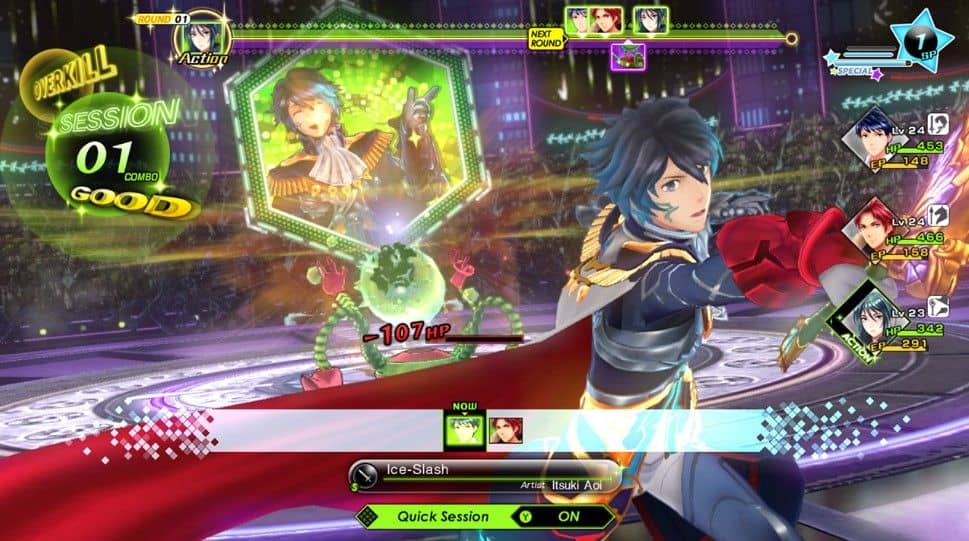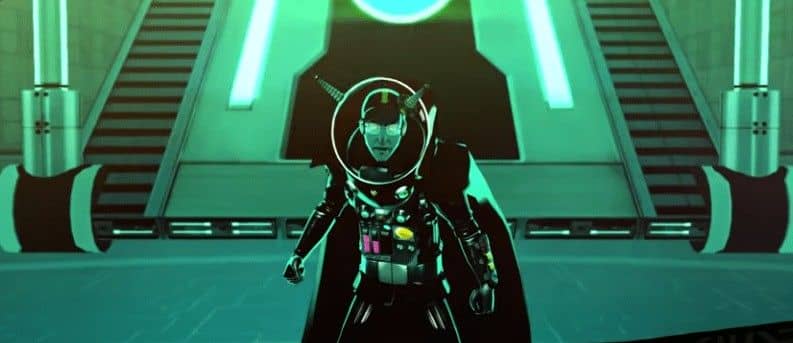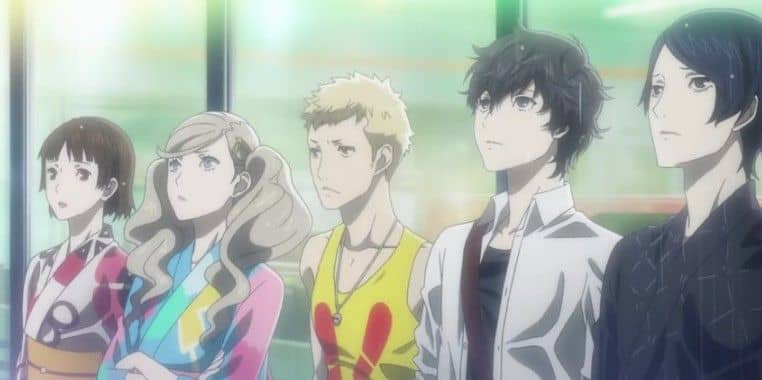The huge success of Persona 5 has elevated the popularity of the series to new levels, with combined sales of the vanilla and Royal versions estimated at around 5 million units. The latter also holds a phenomenal Metacritic average of 95, making it one of the most acclaimed RPGs of all time.
It is therefore no surprise that Atlus attempted to reach a wider market with Tokyo Mirage Sessions #FE Encore, the definitive edition of a cult Wii U title released on the Switch. The Wii U’s failure meant that despite strong reviews, very few people actually got to play it.
The big question is whether Tokyo Mirage Sessions, which also features some Fire Emblem crossovers, is really the Nintendo answer to Persona so many people have yearned for. Here is a full, in-depth comparison of each main feature of the respective titles.

Setting
Tokyo Mirage Sessions, hence the name, is set in Japan’s capital. This is of course the same setting as Persona 5, where many real-life Tokyo districts featured heavily.
Most of the areas of Tokyo Mirage Sessions are remarkably small, featuring only a single screen. The real areas that do feature, like Shibuya and Harajuku, feel fairly accurate, but the hustle and bustle of Tokyo is captured far better within Persona 5 where the many accessible areas contain considerably more details and finishing touches.
Things like realistic subway announcements, chatter overheard in the street and a huge variety of day-to-day activities make Persona 5 an immersive Japanese experience in a different league to Tokyo Mirage Sessions. There are far more places to see, things to do, and people to meet.

Plot
Stylish youngsters awaken to special powers that enable them to battle foes in an alternate dimension unperceived by the general population.
This description sums up the plot of Tokyo Mirage Sessions just as much as recent Persona titles. The former is a lot more cheesy, with the inner power of performing arts being channelled into Performa. The cast comprises of singers and actors from Fortuna Entertainment, who spend as much time progressing their idol careers as they do saving the world from mirage attacks.
Tokyo Mirage Sessions splits the story into chapters, and although this is slightly different to Persona there is likeness in the formula which comprises of conquering a dungeon before enjoying some downtime, whilst tackling a wider scheme in the background. Whereas Persona usually contains a multitude of twists, turns and revelations, Tokyo Mirage Sessions is a far simpler, more streamlined version of a similar tale. Remaining spoiler-conscious, the points again go to Persona.

Music
Being entrenched in Tokyo’s idol culture, music is a huge part of Tokyo Mirage Sessions. There are frequent animated cutscenes where the characters take centre stage and perform catchy J-Pop hits. Once these are viewed, either from main plot progression or side story completion, they are usually unlocked as ad-lib performances that can boost attack power within battle.
Given the importance of pop, it’s perhaps surprising that the Tokyo Mirage Sessions soundtrack generally doesn’t stand up to the excellence of the Persona series. The dungeon and town music are completely bland, a far cry from the likes of Beneath The Mask from Persona 5, or tracks such as Your Affection, Snowflakes and Changing Seasons from earlier titles. The same can be said for the forgettable battle music, which despite literally taking place on a stage in front of an audience, falls well below any Persona equivalent.
The J-Pop tunes, like Kiria’s The Labyrinth and Yashiro’s Black Rain represent the best of the Tokyo Mirage Sessions soundtrack, but overall it doesn’t come anywhere near the incredible collection of Persona music.

Battle System
Both being spawned from the Shin Megami Tensei series, there are some similarities with the turn-based battle systems. The oddly-named elemental attacks like Zio, Agi and Bufu for lightning, fire and ice respectively overlap (I still remember how much these confused me whilst playing my first SMT game).
Likewise, if a weakness is hit, then in both games this opens up the possibility of additional attacks. The main difference is that in Tokyo Mirage Sessions, these are automatically activated. Characters learn command skills which are manually selected from the battle menu, as well as session attacks. The latter will trigger different characters to link together attacks that share the vulnerable element. For example, one character may hit an enemy’s weakness with a fire attack, and if a different character has learnt a session attack that also contains a fire element, they will join in and land a follow-up blow. Eventually, large combos can be accumulated where each party member can get involved, even when not in the active party.
Another main consideration during battle is the special performance gauge, which fills gradually by landing attacks. Up to three bars can be filled at once, and can then be spent on special, powerful moves that avoid resistances and ensure session combos are triggered. Finally, ad-lib performances randomly activate, where characters burst into song and considerably strengthen other moves. This is much like many of the battle perks in Persona, and particularly Persona 5 Royal which relied on random chance for Joker to benefit from his many confidant skills.
Tokyo Mirage Sessions only has three party members in battle at once, compared to a typical Persona foursome. Like Persona, each party member tends to favour certain elements, meaning it’s important to cover a mixture of them to give the best chance of tackling all enemy parties. However, there is a bit more discretion within Tokyo Mirage Sessions for characters to learn skills of several different elements. Therefore, the player has a bit more control over which sort of abilities are held within their party compared to Persona.
Both systems could have actually benefited from parts of the other. I would love Persona to feature something along the lines of the Special Performance gauge so powerful moves can be earned rather than triggered by luck. Tokyo Mirage Sessions, meanwhile, could have done with a bit more strategy – when you have found out a foe’s weaknesses, the game effectively tells you which attack will link the most session combos, and it’s often just a case of picking it over and over.
Overall, neither system blows me away, and although there are distinctions they are probably on a par.

Skills and Abilities
In Persona, skills are simply learnt from levelling up personas, with each new ability locked until a certain level is reached. As the majority of characters only possess one persona this is straightforward, but the protagonist can collect numerous personas at once and fuse them together to open up huge potential for customisation. There are also skill cards, and things such as Persona 5 Royal’s jazz club which can add a bit of further spice to each character’s list of abilities, typically limited at eight.
Tokyo Mirage Sessions takes a different approach where there is no Pokemon-esque collection aspect, and skills are instead learnt from weapons. As more weapons are unlocked for crafting, more and more skills become available to each character. These can be learnt pretty quickly, but since there are only six slots for command skills, this leads to one huge similarity with Persona. Namely, the regular, stressful decisions of which skills to retain and which to discard for good.
There are also six separate slots for session attacks and passive abilities (such as boosting stats or nullifying a certain status ailment). Thankfully, there aren’t many potential session attacks to agonise over, and the passive abilities tend to be far easier decisions to make.
Like the battle system, there isn’t much between them in this area.

Length and difficulty
To put it simply, the Persona games are far longer than Tokyo Mirage Sessions. It’s virtually impossible to complete the first playthrough of a Persona game in under 80 hours, whereas Tokyo Mirage Sessions will likely clock in well under 40 hours. My own playthrough, where I finished all side stories, actually only ended up at 30 hours. There were a few side quests I didn’t complete, but it’s hard to see it being dragged out much longer.
When it comes to difficulty, Tokyo Mirage Sessions is a strange one. On normal mode, battles are complete pish until the boss fight usually comes with a massive spike that requires a bit of grinding. The other side to this is that grinding is as easy as I think I’ve ever experienced in an RPG. The training area, accessible at any time, can be farmed for items that level up your characters at an alarming rate. As you increase in strength, levelling actually gets easier rather than harder with this method. You can comfortably go from around level 50 to level 99 in a few hours and I inadvertently broke the game by grinding too much for a boss.
In truth, Persona 5 Royal also presented little challenge, and I fancy the Persona series is getting gradually easier. Persona 3’s autonomous, uncontrollable party members were the biggest test the series has posed in recent times. At least Tokyo Mirage Sessions doesn’t force a game over when the main character dies, but neither game is overly difficult once you get to grips with it.

Characters
The muted self-insert Persona protagonists have virtually all actions controlled by the player. From their name, to their dialogue choices and the way their time is spent, it’s all up to you. Admittedly, the main characters do exhibit some built-in personality traits, but they typically remain silent unless directed by the player.
Tokyo Mirage Sessions’ main character is Itsuki. He is not a silent self-insert, but a rather generic RPG protagonist. He is do-gooder who happens to have so little artistic talent he remains somewhat relatable compared to the pop stars and actors elsewhere in the party. There are plenty of dialogue choices given, but they rarely make any difference and only control which way the conversation develops. In fairness, even in Persona very few dialogue choices make any difference outside of social links, but Itsuki’s mostly fixed script and personality are still a major deviation from Persona.
In terms of gameplay, Itsuki doesn’t possess any ability akin to the Persona protagonist wild card, so cannot switch around elements to automatically become the game’s strongest character. Furthermore, there are no social stats to worry about outside of battle.
Tokyo Mirage Sessions contains seven playable characters in total, roughly on par with the average Persona squad, and they’ll certainly feel familiar. Itsuki’s best friend, Touma, is the hot-headed bro written in the same vein as Ryuji, Junpei and Yosuke. Tiki, the Fire Emblem character who gets the most screentime, takes up the Nanako ‘little sister’ mantle (and even calls Itsuki “Big brother”). With modelling and pop fame so prevalent, similarities to Rise and Ann will also be found within the arcs of Kiria, Tsubasa and Ellie.
There is also a small support cast who engage closely with the story and are likeable enough (except for Barrie!) but as a by-product of its shorter length there are nowhere near as many multi-dimensional characters as Persona.
That’s not to say Persona is perfect. I would like to see some more dynamism in the confidant/social link arcs, where your relationships with teammates can affect the story and dialogue a bit more. I also think some additional main character customisation will be welcome in Persona 6, around things like gender and sexual orientation. These are important points to immerse a wider variety of players and Persona 3 Portable is still the only game that has a choice between protagonists of different genders.

Calendar
The trademark Persona calendar system often means the gameplay is a stress-inducing time management exercise. Every time slot used means sacrificing something else, with requirements to beat dungeons, spend time on relationships and build social stats among many, many other things.
Tokyo Mirage Sessions has no such complexity. Chapters are followed by intermissions, but sidequests and relationship events (discussed below) can stack up and be completed in later chapters. Nothing is missable and the training area to grind levels or skills can be accessed at any point, even when half-way through a dungeon.
Whether this is a good thing depends on your preference, but this is an area of marked difference within Tokyo Mirage Sessions.

Social Links v Side Stories
A key part of Persona’s content is in its social interactions with other characters. These grant the protagonist useful abilities as well as increasing the level of new personas fused with the corresponding Arcana.
The Tokyo Mirage Sessions equivalent comes in the form of side stories. These are similar to social links (or confidants) in that the protagonist spends some time with another character in order to progress an individual subplot and open up new gameplay options.
Unlike Persona, where social links typically have ten stages, the Tokyo Mirage Sessions side stories only have three sections before each character’s arc is complete. The individual sections themselves tend to be longer than a Persona social link stage as they usually involve a side quest such as finding a cat or slaying a set number of enemies in battle. However, these are fairly dull and overall the fewer stages result in Tokyo Mirage Sessions taking its characters on far shallower journeys.
Since there is no calendar or time pressure, there is no requirement to pick the correct dialogue options to progress the relationship faster. Also, Tokyo Mirage Sessions only has 9 characters with whom to bond. For comparison, Persona 5 Royal had 23 confidants, Persona 4 Golden had 24 social links and Persona 3 had 22.
Another important point to note is that unlike Persona, there is no possibility to enter romantic relationships in Tokyo Mirage Sessions. It’s not that Itsuki is short of potential suitors, but these cannot be granted official girlfriend/waifu status, which could be a fatal point for some players.

Fire Emblem
For the sake of completeness, it’s worth a reminder that Tokyo Mirage Sessions is billed as a Shin Megami Tensei/Fire Emblem crossover, which is a different dynamic to anything Persona has attempted.
However, this is a bit of an exaggeration. Most Fire Emblem characters that feature are superficial, distorted versions who assist the cast during battle in virtually the exact same manner as personas. Admittedly, they have far more lines and depth than the latter, but that isn’t saying much. The Persona titles don’t go out of their way to give much personality to these beings outside of their physical appearance and the very, very occasional line of dialogue.
The crossover leans a bit more towards Fire Emblem at the end of the story, but this is most definitely a Shin Megami Tensei game. My extremely rough calculations set the scales at 80/20 with Fire Emblem getting the smaller share. If you are a Fire Emblem fan and have sufficiently managed your expectations, it’s still nice to see characters and references crop up regularly.
Conclusion
Looking at each section above in depth, you’ll see there are definitely similarities between Tokyo Mirage Sessions and the Persona series, probably enough to scratch that Japanese itch while we patiently wait for Persona 6 (which is in development). However, the TL;DR version is that in virtually every area, Persona contains considerably more depth and quality than Tokyo Mirage Sessions.
That’s not to say Tokyo Mirage Sessions doesn’t have its charm, and Persona is an incredibly tough act to follow. If Japanese idol culture is something that piques your interest, it is still definitely a title that you should play. Just don’t expect it to match the superb recent standards that have been set by Persona.
Find our full reviews of Persona 5 Royal and Tokyo Mirage Sessions #FE Encore below.
- RELATED: Tokyo Mirage Sessions #FE Encore Review
- RELATED: Persona 5 Royal Review







